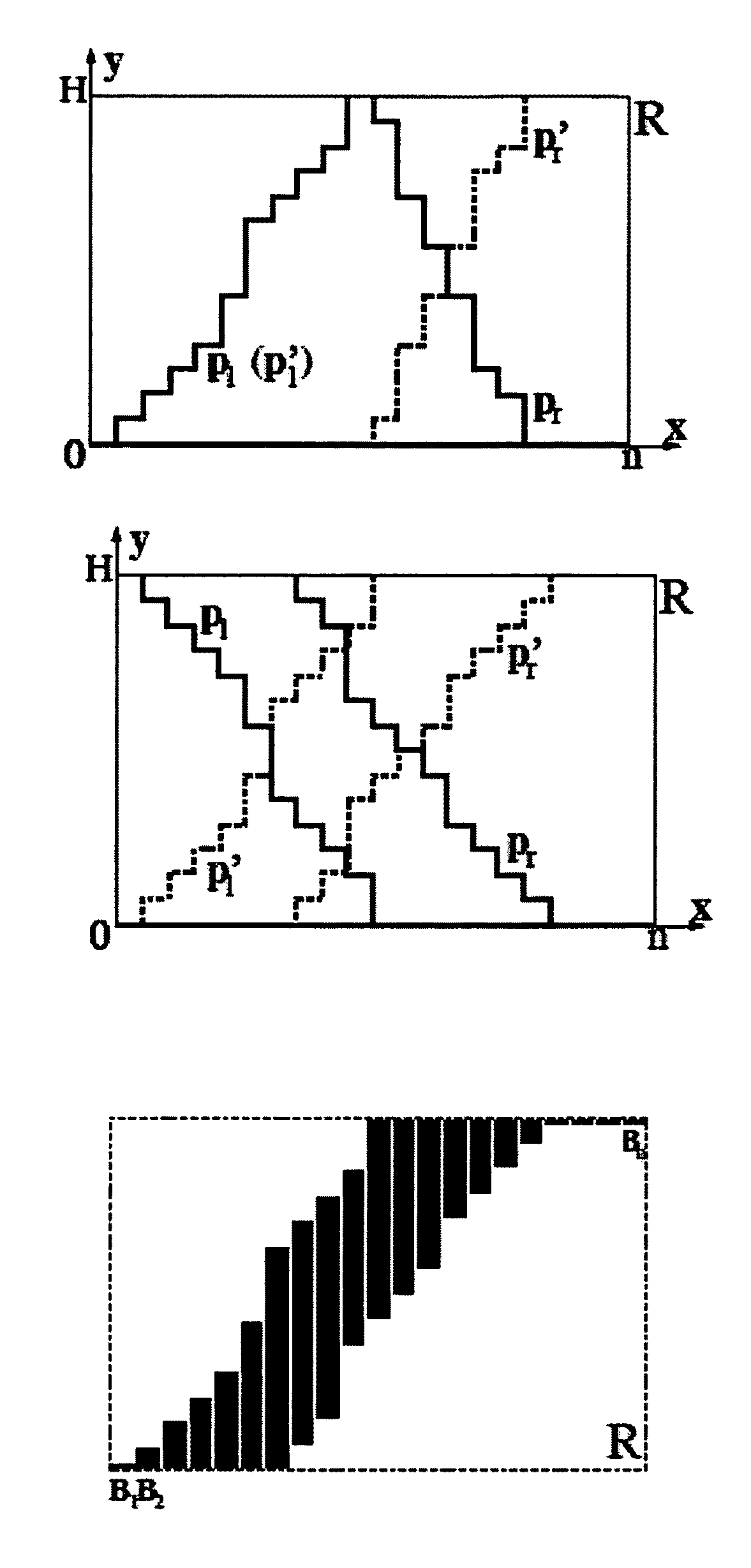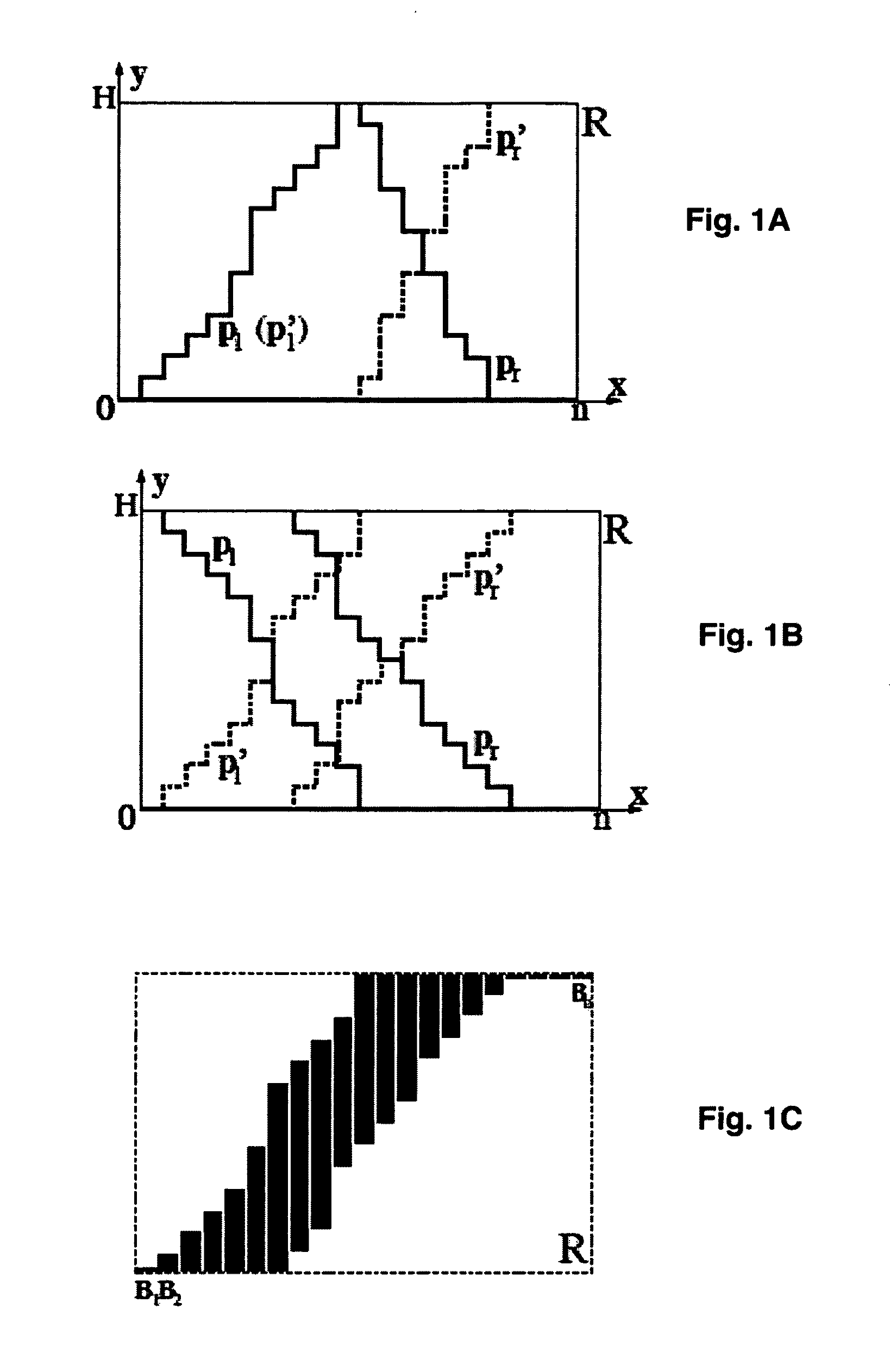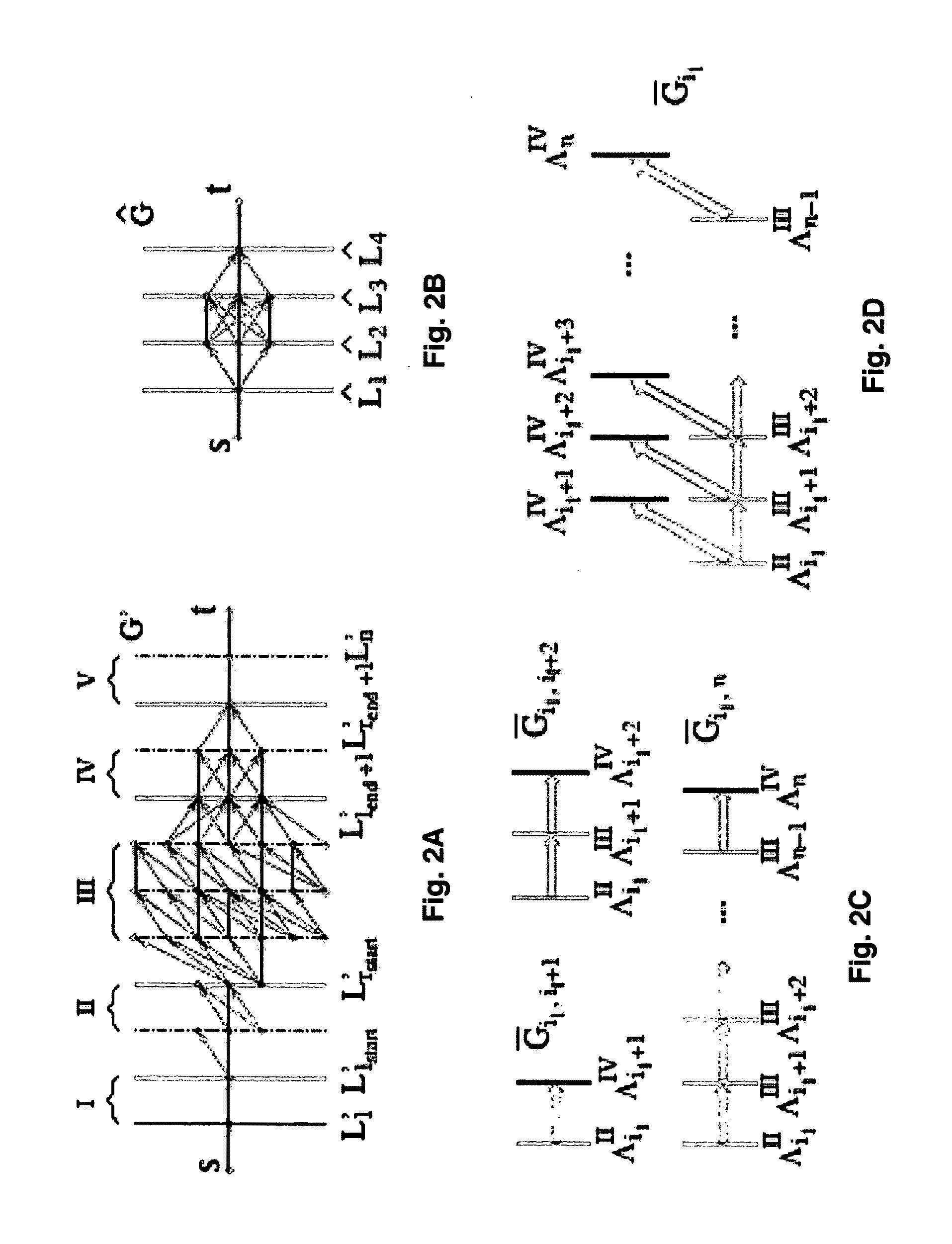Single-arc dose painting for precision radiation therapy
a radiation therapy and single-arc technology, applied in the field of radiation oncology for malignant tumors, can solve the problems of labor-intensiveness, compromising the efficiency of treatment, and inefficient treatment delivery,
- Summary
- Abstract
- Description
- Claims
- Application Information
AI Technical Summary
Benefits of technology
Problems solved by technology
Method used
Image
Examples
example 1
Constrained Coupled Path Planning (CCPP)
[0053]In constrained coupled path planning, the starting and ending points of the sought paths are prespecified. Precisely, the constrained coupled path planning (CCPP) problem is: Given an n×H uniform grid Rg, a non-negative function ƒ defined on the integers in {1, 2, . . . , n}, and positive integers lstart, rstart, lend, rend, c, and Δ (Δ≦H), find two noncrossing paths pl and pr of height H along the edges of Rg to minimize the total error ε(pl, pr) Δ=Σni+1|li,pl,pr−f(i)|, subject to the following constraints: (1) pl (resp., pr) starts at (lstart, 0) (resp., (rstart, 0)) and ends at (lend, H) (resp., (rend,H)), (2) (the steepness constraint) both pl and pr are c-steep paths, and (3) (the closeness constraint) |li,pl,pr−f(i)|≦Δ for all i=1, 2, . . . , n.
[0054]Without loss of generality, it is assumed that lstart≦lend and rstart≦rend, so that the two sought paths pl and pr are both xy-monotone increasing paths. Otherwise, the CCPP problem ca...
example 2
Computing the Complete Set of all CCPP Problem Instances
[0058]Overview of the Algorithm
[0059]Given f, n, H, Δ, and c, CCPP problem instances are solved on f, n, H, Δ, c, lstart, rstart, lend, and rend for all possible combinations of lstart, rstart, lend, and rend. Without loss of generality, only those combinations which satisfy lstart≦lend and rstart≦rend are considered. All problem instances are classified into two subsets S1 and S2, with S1 (resp., S2) containing those with lend≧rstart (resp., lendstart).
[0060]Solving all CCPP Instances in S1
[0061]It is to be noted that this approach can be adapted easily to solve all instances in S2. Since 0≦lstart≦rstart≦lend≦rend≦n, there are totally N=Θ(n4) problem instances, denoted by l1, l2, . . . , lN. Let l(k)start, r(k)start, l(k)end, and r(k)end be the corresponding specification for the problem instance lk. An instance lk (1≦k≦N) corresponds to a shortest path problem on a vertex-weighted DAG, denoted by G′k, of O(nHΔ) vertices and ...
example 3
Unconstrained Intensity Optimization in Single-Arc Dose Painting
[0080]The first planning step for single arc dose painting is unconstrained intensity optimization. Different algorithms can be used for achieving this step (11-13). Suitable algorithms are available in the relevant literature (8,10). As with IMAT, an arc is approximated with multiple fixed radiation beams evenly spaced every 5-10 degrees (5).
Example 4
Leaf-Sequencing in Single-Arc Dose Painting
[0081]Step two in single-arc dose painting is the conversion of the optimized beam intensities into connected field apertures. The goal is to find a set of connected field shapes that when delivered dynamically based on linear interpolation between the apertures, will result in minimum discrepancy to the optimized intensity profile. For leaf sequencing, a hybrid approach has been developed. For simple cases the method called line segment approximation on component intensity profiles is appropriate. For more complicated cases, leaf...
PUM
 Login to View More
Login to View More Abstract
Description
Claims
Application Information
 Login to View More
Login to View More - R&D
- Intellectual Property
- Life Sciences
- Materials
- Tech Scout
- Unparalleled Data Quality
- Higher Quality Content
- 60% Fewer Hallucinations
Browse by: Latest US Patents, China's latest patents, Technical Efficacy Thesaurus, Application Domain, Technology Topic, Popular Technical Reports.
© 2025 PatSnap. All rights reserved.Legal|Privacy policy|Modern Slavery Act Transparency Statement|Sitemap|About US| Contact US: help@patsnap.com



